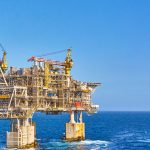Situation
Client required annual API-compliant inspection of offshore pedestal crane in compliance with client and crane OEM inspection and testing procedures and specifications.

Client required annual API-compliant inspection of offshore pedestal crane in compliance with client and crane OEM inspection and testing procedures and specifications.
Client has experienced challenges for inspection scope management where integrated inputs required from crane OEM, contractor, rope access and inspection contractor, NDT, and client.
Pressure Dynamics coordinated and project managed all stakeholder inputs as a single-point-of-accountability for client. A Pressure Dynamics lead crane technician (API certified) led the offshore inspection team which included an OEM crane technician, 2 rope access technicians, and a rope access qualified API crane inspector. NDT and client coordination effected both offshore and onshore.
Integrated work scope project managed and executed on-time and on-budget – essential due client schedule and Personnel-on-Board limitations. Technical advisory provided regarding material selection due condition observed offshore. Prioritised and risk-categorised maintenance requirements reported. The crane was verified to be in safe, operable condition.
Pressure Dynamics was engaged to conduct an annual API-compliant inspection of an offshore pedestal crane in compliance with client and crane OEM inspection and testing procedures and specifications.
The client has experienced challenges for inspection scope management where integrated inputs required from crane OEM, contractor, rope access and inspection contractor, NDT, and client.
Pressure Dynamics coordinated and project managed all stakeholder inputs as a single-point-of-accountability for client, with project management onshore, and offshore works and stakeholder coordination by the Pressure Dynamics’ Lead Crane Technician.
A Pressure Dynamics lead crane technician (API certified) led the offshore inspection team which included a crane OEM crane technician, 2 rope access technicians, and a rope access qualified API crane inspector.
Slew bearing tilt measurement testing was conducted to client procedure with no load on hook, given risk assessment that testing at full SWL the maximum system pressure may compromise the hydraulic hoses in poor condition, and leak hydraulic oil.
Hydraulic system inspection was conducted to client procedure, including oil sampling, filter inspection, hydraulic hose condition, and testing slew drive gears backlash. Critical hydraulic hose replacements were effected using available critical spares, with escalation of a corrective work order coordinated between the client Maintenance Supervisor and Pressure Dynamics’ engineering team onshore. Technical advisory from Pressure Dynamics’ flexible hydraulic hose assembly Subject Matter Expert was provided regarding material selection, given operating conditions and hydraulic hose types observed by the Pressure Dynamics Lead Crane Technician.
Structural inspection of the boom and A-frame was conducted to client procedure, as complemented by a Close Visual Inspection (CVI) for the crane’s welds.
The crane pedestal condition checklist was completed to client procedure.
OEM Annual Inspection was conducted in accordance with OEM and client procedures.
All maintenance requirements were reported on a prioritised basis, for execution (i) within 3 months, (ii) within 6 months, and (iii) within 12 months.
Management of the annual inspection as an integrated work scope – including OEM, rope access, NDT and client inputs – resulted in resourcing, scheduling and process efficiency. This was essential due client schedule requirements and Personnel-on-Board limitations.
Critical hydraulic hose replacements were actioned during the work scope using available spares, and corrective work orders escalated, with collaboration and coordination by client personnel and Pressure Dynamics’ engineering team onshore.
The subject matter expertise and experience of Pressure Dynamics Lead Crane Technician lead to observation of operating conditions and non-optimal material application, which was rapidly resolved through advice from Pressure Dynamics’ flexible hydraulic hose assembly Subject Matter Expert.
The inspection report specifies all maintenance requirements on a prioritised basis – for execution (i) within 3 months, (ii) within 6 months, and (iii) within 12 months – enabling cost and resource efficient forward planning and works management.
This case study demonstrates Pressure Dynamics proficiency to manage an annual crane inspection conducted as integrated scope, including OEM, rope access, NDT and client inputs.